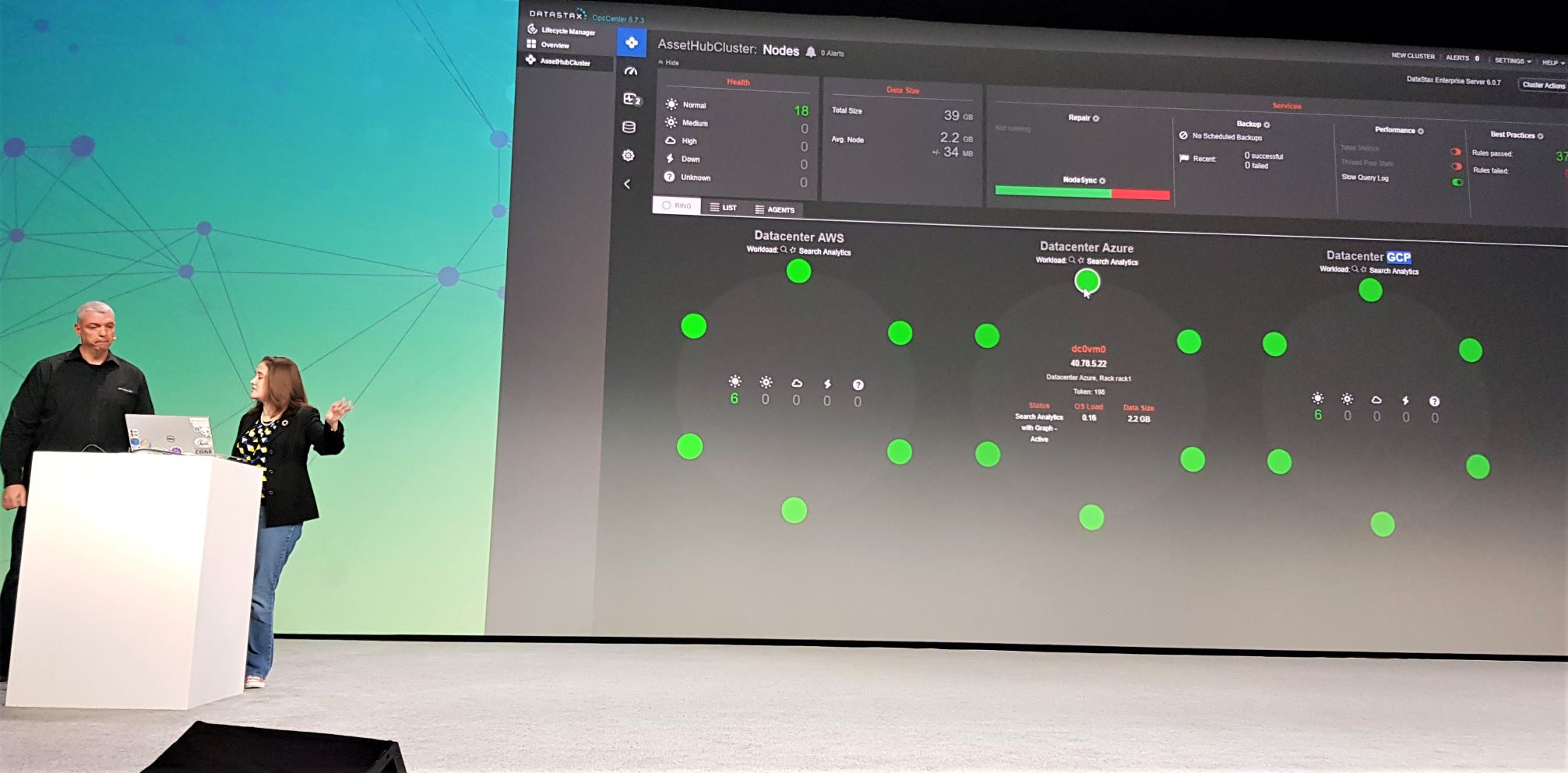
While DataStax has been heavily involved in Apache Cassandra conferences in recent years, the company’s “Accelerate” event in Washington this week is the first of its kind. Disconnecting an entire AWS region during a live demonstration was a bold gambit to get started as a result – but also compelling way for the Bay area-based firm to demonstrate the resilience of its managed Apache Cassandra offering.
DataStax CEO Billy Bosworth was joined by the company’s Global Vanguard Lead Chelsea Navo to pull the plug on a retail app’s AWS infrastructure during his keynote speech. Their point: “Chaos in the cloud is real”, as Navo emphasised. “There are many points for failure. In order for an app to be resilient, you need to be able to know that if you drop a node, everything still runs. If an entire data centre drops offline, your app is resilient. You need a database that can detect this, and withstand what’s happening with no customer impact.”

The demo aimed to make this point – and a virtue out of Cassandra’s ability to withstand the vice of cloud “chaos”.
Showcasing an application rolled out to track retail consumer behaviour and sales across multiple geographies, the two pulled up a clean dashboard showing sales, active nodes on which the application was running (six nodes per cloud across three cloud providers) – and its ability carry right on if first a single AWS node and then an entire region dropped off.
The demo, thankfully, was glitch-free.
DataStax Constellation: A Cloud-Native Managed Cassandra Service
For those unfamiliar with Apache Cassandra, it is a distributed database for managing large amounts of structured data across many commodity servers, which was first developed, then open-sourced by Facebook. Rather than using a legacy master-slave or a manual sharded architecture, it has a masterless ring design that allows it to scale, be “always on” and free companies from sweating about disaster recovery.
DataStax’s demo at the event came as it launched two new tools under the umbrella of a new DataStax Constellation offering. Firstly, a cloud-native managed Cassandra-as-a-Service: a step down from the company’s existing, full-fat managed service for Cassandra in the cloud, but a significant step up from its DIY Apache Cassandra.
The new offering runs on Azure or GCP, infrastructure, with AWS expected to follow later this year, but with DataStax taking away the headache for users of having to manage Cassandra skills and Azure/GCP.
The emphasis from DataStax: ease of use, enterprise grade security – which Bosworth said the company has been refining for a decade – performance improvement over the raw open source iteration, and straight-forward, demand-based pricing. An early access programme lands this summer. Second up was DataStax Insights: health indices with the ability to review app/database performance with a birds-eye view, or drill down to analyse and tweak at a granular level.
Noting that 60 percent of the company’s customers are already deploying its offering on their own cloud infrasturucture, CEO Billy Bosworth said: “We want to make this powerful tech easy, simple, a great experience: dare I say ‘fun’. We’re going to fundamentally change the way you work with Apache Cassandra.”
Joining the keynote was Deloitte principle Mark E. White, who demonstrated a new platform developed by DataStax, Deloitte and GCP. Dubbed “Opioid360”, the toolkit integrates a sweeping array of datasets then generates (via data visualisation) intelligence that it hopes will allow public sector customers to interdict gang activity and help tackle a raging opioid crisis in the US.
It was a compelling presentation, but DataStax, like all specialists in open source software, has tricky balance to strike: smaller dev-centric companies may still be building their infrastructure in-house using the (free) open source Cassandra iteration. Larger multinationals can simply buy-in Cassandra expertise, if they don’t choose to use DataStax Enterprise.
Navo was clear about the sweet spot: if a business wants to roll out an application with no maintenance windows, no batch windows, make sure it is always on, perform with no prior insight into when loads are going to spike, and integrate a sweeping range of enterprise systems, that is not going necessarily going to be easy. DataStax aims to make it so. As for Bosworth’s promise of “fun”? If the keynote was any guide, the company certainly seems to having some…






